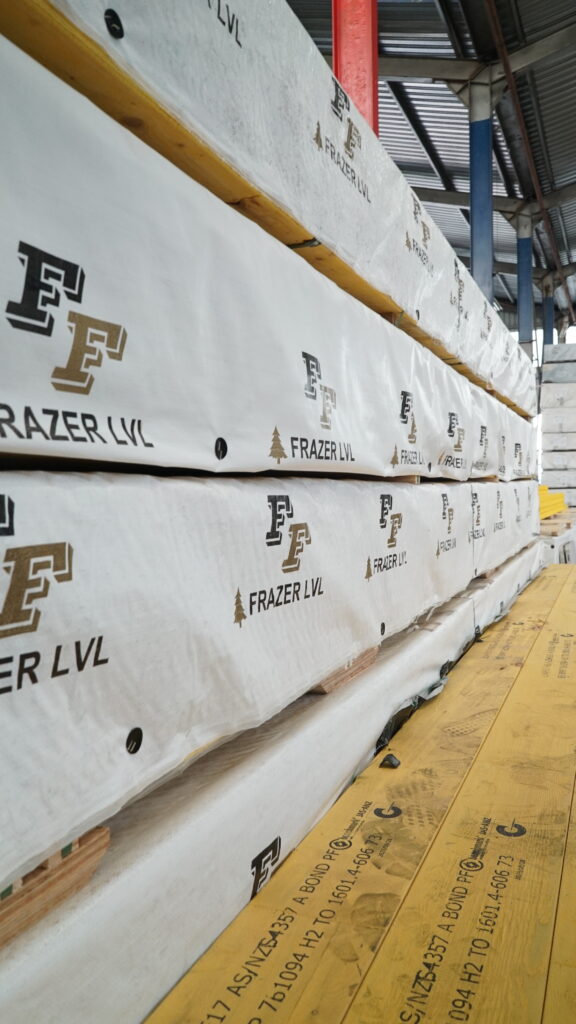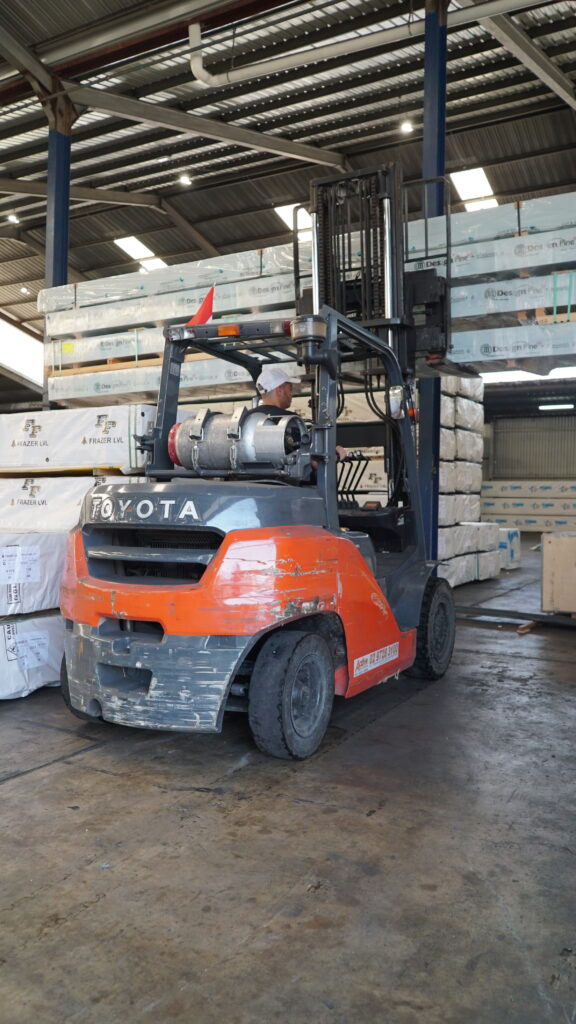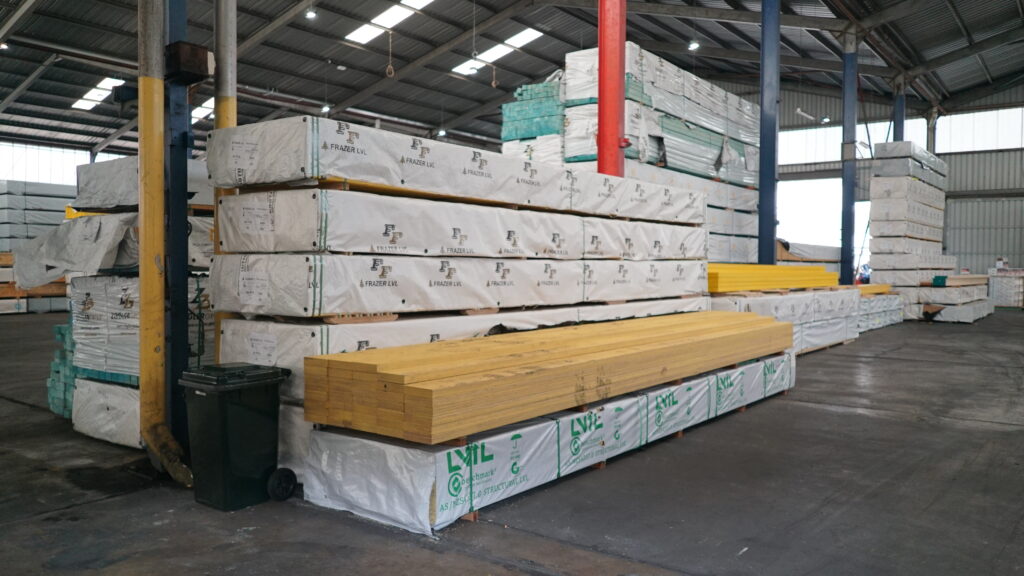The Multiworks Difference: Quality, Support, and Expertise
Engaging with Multiworks Timber means accessing a wealth of resources underscored by impressive figures: 20 years of timber expertise, a portfolio of over 525 successfully delivered projects, a selection of 10 high-quality brands, and a dedicated team of 15 professionals. Our unwavering commitment to quality and customer satisfaction ensures that we offer the best prices in Sydney, backed by same-day delivery for orders placed before 2 pm. By choosing Multiworks Timber, you’re not just starting a project; you’re embarking on a partnership that guarantees excellence at every turn.
Durability That Stands the Test of Time
One of the most compelling attributes of LVL timber is its exceptional durability. Engineered through a process that bonds multiple layers of wood veneers with strong adhesives, LVL achieves a level of strength and stability that traditional timber cannot match. This process not only enhances its load-bearing capacity but also ensures uniformity in its strength, eliminating the weaknesses inherent in natural wood, such as knots and grain irregularities.
Flexibility in Design and Application
The versatility of LVL is a game-changer for architects and designers, offering them the freedom to push the boundaries of creativity. Its ability to be cut, shaped, and moulded into various arrangements enables the implementation of innovative architectural designs that would be challenging, if not impossible, with traditional timber. This flexibility extends to a broad spectrum of construction applications, from beams and load-bearing columns to framing and flooring systems, making LVL timber a highly adaptable solution for diverse construction needs.
Commitment to Environmental Stewardship
LVL timber stands as a testament to environmental stewardship, reflecting a commitment to minimising ecological impact. Sourced from sustainably managed forests, LVL ensures that wood resources are utilised efficiently, promoting the conservation of natural habitats and biodiversity. The manufacturing process of LVL also exemplifies eco-friendliness, with reduced waste and lower energy consumption compared to conventional construction materials.
Redefining Modern Construction Standards
The advent of LVL has redefined construction standards, setting a new benchmark for strength, flexibility, and sustainability in building materials. Its input into construction projects not only elevates the quality and performance of projects but also aligns with the global shift towards environmentally conscious building practices.

Preparation for Working with LVL Timber
Selection of LVL Timber
The journey begins with the careful selection of LVL, focusing on quality and suitability for your specific project needs. Assess the timber for uniformity, structural integrity, and the absence of any defects that might compromise its performance. Choosing timber from reputable suppliers, like Multiworks Timber, guarantees you start with a product that meets strict quality standards.
Proper Storage Practices
Once the LVL is on-site, proper storage is paramount to maintain its condition. Store the timber off the ground, preferably on levelled platforms or racks, to prevent direct contact with moisture which can lead to warping or fungal growth. Ensure the storage area is well-ventilated to allow air circulation around the timber, reducing the risk of moisture collection. If storing outdoors, protect the timber with waterproof covers, keeping them clear of ground moisture while allowing air to circulate to prevent condensation.
Handling LVL Timber
Handling LVL with care is essential to preserve its structural integrity. Use appropriate lifting techniques and equipment to avoid damaging the timber’s edges and surfaces. When moving the timber, carry it on its edge and, if possible, with assistance, to distribute its weight evenly and prevent bending or breaking.
Acclimatisation to the Environment
Before installation, allow the LVL to get used to the local environment, particularly if it has been stored in a significantly different climate. This adjustment period minimises the potential for expansion or contraction post-installation, which could affect the timber’s performance and the project’s overall stability.
Pre-installation Inspection and Planning
Before installation, conduct a thorough inspection of each piece of LVL, ensuring it remains free from damage or defects. Plan the layout and cutting strategy meticulously to maximise material use and minimise waste. Mark cutting lines clearly, considering the timber’s grain and structural properties to optimise strength and appearance.
Essential Tools for Cutting LVL Timber
When it comes to transforming LVL timber into the backbone of your construction projects, the significance of selecting the correct cutting tools cannot be overstated. Precision and safety are paramount, each cut not just altering the timber but shaping the future integrity and appearance of your project.
Choosing the Right Saws
- Circular Saw: A norm in timber construction, the circular saw offers versatility and power for making straight cuts. Look for a saw with adjustable depth settings to accommodate the thickness of the LVL and ensure a clean cut through the material.
- Mitre Saw: For precise angled cuts, a mitre saw is invaluable. It’s particularly useful for cutting joints or when a project requires a high degree of detail. The accuracy and ease of use make it a preferred tool for both novice and experienced.
- Table Saw: When it comes to making long, straight cuts or ripping timber, a table saw stands out for its stability and efficiency. It’s ideal for cutting large quantities of LVL with consistent precision, making it a key tool in larger projects.
- Jigsaw: For intricate cuts or when dealing with curves, a jigsaw provides the manoeuvrability and finesse needed. While not typically used for the bulk of LVL cutting, it’s essential for detailing and finishing work.
Safety Gear: A Non-Negotiable Aspect
Equally important as the cutting tools themselves is the safety gear that protects you while you work.
- Safety Glasses: Protect your eyes from sawdust and potential flying debris. Opt for glasses with side protection for comprehensive coverage.
- Hearing Protection: Power saws can generate significant noise levels. Protect your hearing with earplugs or earmuffs to reduce the risk of long-term hearing damage.
- Dust Mask or Respirator: Sawing LVL produces fine dust particles that can be harmful if inhaled. A dust mask or a protective respirator is essential, especially in enclosed spaces.
- Protective Gloves: While handling and cutting timber, gloves can protect your hands from splinters and cuts. Choose gloves that offer a good grip without compromising on sensitivity or dexterity.
- Anti-Vibration Gloves: For prolonged use of power tools, consider anti-vibration gloves to reduce the risk of hand and arm fatigue, which can lead to long-term health issues.
Joining Techniques for LVL Timber
The integrity of LVL timber constructions hinges on the proficiency of effective joining techniques. Multiworks dives into gluing, screwing, and nailing, and lights the path to achieving durable and stable structures. This section equips you with the knowledge to make informed decisions, ensuring the longevity and integrity of your constructions.
Screwing and Nailing: What Works Best with LVL
Screwing LVL Timber
Screws offer superior holding power and are an excellent choice for applications where strength and durability are crucial. They are particularly beneficial in areas subject to high winds or seismic activity, where the additional grip can help prevent structural movement.
- Pre-drilling: To avoid splitting the LVL, it’s advisable to pre-drill holes for the screws, especially near the ends of the timber. The pre-drilled hole should be slightly smaller than the screw’s core diameter to ensure a tight fit.
- Choosing the Right Screw: Select screws specifically designed for use with timber, which typically have a coarse thread and a sharp point to penetrate easily and hold securely. Length and gauge should be appropriate for the thickness of the LVL and the load it will bear.
- Driving the Screw: Use a power drill or driver to insert the screw, ensuring it’s driven straight and flush with the timber surface. Overdriving screws can weaken their hold, while underdriving can affect the timber’s appearance and functionality.
Nailing LVL Timber
Nailing is a faster method than screwing and can be more cost-effective for large projects. Nails are suitable for general construction tasks where sheer strength is the main requirement, and the speed of assembly is critical.
- Nail Selection: Choose nails that are long enough to penetrate through the LVL and into the underlying support structure by at least 3 cm (1.2 inches) for a secure hold. Ring-shank or spiral nails offer enhanced grip compared to smooth-shank nails.
- Nailing Technique: When nailing by hand, use a hammer that’s heavy enough to drive the nail in a few strikes without causing damage to the LVL timber’s surface. For larger projects, a nail gun can dramatically increase efficiency and reduce labour. The Paslode CoilMaster Impulse Gun is a great example. Its cordless design frees you from the restrictions of cables, offering flexibility on the job site.
- Spacing and Placement: Distribute nails evenly along the connection points, avoiding placing them too close to the edges of the timber to prevent splitting. Proper spacing ensures even distribution of load and contributes to the overall stability of the construction.
Gluing: Best Practices and Products
At the heart of this process lies the choice of adhesive – a choice that can dramatically influence the outcome of your project. Macism Adhesive emerges as a frontrunner in this context, boasting unmatched bonding capabilities that set a new standard in the industry. Here, we delve into the application techniques and advantages of this premier adhesive, guiding you towards achieving durable and robust constructions with LVL timber.
Understanding Macism Adhesive
Macism Adhesive is designed specifically to cater to the demands of LVL timber construction. Its formula is engineered to penetrate the wood fibres deeply, creating a bond that is both flexible and incredibly strong. This adaptability ensures that the joints can withstand the natural expansion and contraction of timber due to environmental changes, thereby preventing cracking or weakening over time.
Preparing the Surface
Successful application of Macism Adhesive begins with proper surface preparation. Ensure that the LVL surfaces to be glued are clean, dry, and free from dust or grease. A light sanding may be necessary to remove any finish that could impede adhesion. This step is crucial as it guarantees the adhesive has the best possible environment to form a strong bond.
Application Techniques
- Even Distribution: Apply the adhesive evenly across the surface, using a brush or roller to spread it thoroughly. Achieving an even layer ensures consistent bonding strength across the entire joint.
- Clamping: Once the adhesive is applied, join the timber pieces together and clamp them securely. The pressure from clamping helps to spread the adhesive, filling any gaps and creating a tighter bond. Follow the adhesive’s instructions for clamping time to ensure optimal adhesion.
- Curing Time: Allow sufficient time for the adhesive to cure fully. The curing process is when the adhesive hardens and reaches its maximum bonding strength. The specific time can vary depending on environmental conditions like humidity and temperature, so refer to the product’s guidelines for accurate timings.
Benefits of Using Macism Adhesive
- Strength and Durability: Macism Adhesive provides a bond that rivals or exceeds the strength of the wood itself, ensuring that glued joints contribute to the overall durability of the construction.
- Moisture Resistance: It offers excellent resistance to moisture, making it suitable for use in environments where timber might be exposed to varying humidity levels or direct contact with water.
- Flexibility: The adhesive maintains a degree of flexibility even after curing, accommodating the natural movement of the timber without compromising the integrity of the bond.
- Ease of Use: Despite its industrial-grade performance, Macism Adhesive is user-friendly, with straightforward application requirements that make it accessible for both professional builders.

Finishing Touches for LVL Timber Projects
The journey from the structural phase of construction to the unveiling of a project’s final form is a crucial one. It’s during this stage that true craftsmanship and attention to detail come to the forefront. When working with LVL, the application of finishing touches is not merely a matter of aesthetics but also an essential step towards enhancing the timber’s longevity and resilience.
Sanding LVL Timber
The first step in preparing LVL for any finish is thorough sanding. This process smoothens the surface, removing any imperfections and preparing it to receive paint or sealant effectively. Start with a coarse-grit sandpaper to address any rough areas and gradually move to finer grits for a smooth finish. It’s crucial to sand in the direction of the timber grain to avoid creating scratches that could mar the timber’s natural beauty. Dust off the surface cautiously after sanding to ensure a clean base for painting or sealing.
Painting LVL Timber
Painting LVL can transform its appearance, allowing it to blend seamlessly with the project’s design palette or stand out as a feature element. The key to a flawless paint job lies in the preparation. After sanding, apply a primer specifically designed for use on timber. This primer will not only improve the paint’s adherence but also enhance the durability of the finish. When choosing paint, opt for a high-quality product suitable for exterior or interior use, depending on the project’s specifics. Apply the paint in thin, even coats, allowing sufficient drying time between applications. A final coat can add depth and richness to the colour, elevating the overall look of the timber.
Sealing LVL Timber
Sealing is the final step in protecting your LVL projects, especially those exposed to the elements. A high-quality sealant can safeguard the timber from moisture, UV rays, and other environmental factors that could compromise its integrity over time. Choose a sealant that is compatible with LVL and suited to the project’s environment – be it indoor or outdoor.
Apply the sealant evenly across the surface, using a brush or roller designed for the purpose. It’s important to cover all faces and edges of the timber to ensure comprehensive protection. According to the manufacturer’s instructions, allow the sealant to dry completely before the project is put to use.
By dedicating the time and effort to properly sand, paint, and seal your LVL timber, you not only enhance its visual appeal but also invest in its durability. These finishing touches are a testament to the quality and craftsmanship inherent in your work, ensuring that each project stands as a durable, beautiful structure for years to come.
Regular inspections for signs of wear, moisture ingress, and pest infestation are crucial. Promptly addressing any issues, applying protective sealants, and ensuring proper ventilation around timber elements help maintain their condition. By embracing these maintenance strategies, you play a vital role in the longevity and legacy of your LVL timber constructions, ensuring they remain as testament to quality craftsmanship for future generations.
Innovative Projects Using LVL Timber
The true potential of LVL is unleashed in the myriad of innovative projects brought to life by our creative and forward-thinking customers. From ambitious architectural designs to intricate interior details, LVL timber provides the versatility and strength required for groundbreaking work.
A testament to this innovation is seen in the captivating projects featured by Tallis Construction, where the boundless possibilities of LVL are showcased. These examples serve as a source of inspiration, encouraging you to explore the full range of your creativity and push the boundaries of conventional construction with LVL. Let these innovative projects spark your imagination and inspire you to embark on your ambitious ventures.
Working with LVL Timber: Addressing Common Concerns and Questions
Can LVL Timber Be Used for Outdoor Projects?
Absolutely, LVL timber is suitable for outdoor projects due to its engineered properties that enhance durability and resistance to environmental factors. However, it’s essential to ensure that the LVL timber is properly treated and sealed to withstand the elements, including moisture and UV exposure, to maintain its integrity over time.
How Does LVL Timber Compare to Traditional Timber in Terms of Strength?
LVL timber is renowned for its superior strength and stability compared to traditional solid timber. This is because LVL is manufactured by bonding multiple layers of wood veneers together under heat and pressure, aligning the grain for uniform strength and minimising natural defects. This process results in a product that can bear heavier loads and span greater distances, making it ideal for structural applications.
Is LVL Timber Environmentally Friendly?
LVL timber is considered to be an environmentally friendly option, especially when sourced from sustainably managed forests. The manufacturing process of LVL timber makes efficient use of wood resources by utilising smaller trees and reducing waste. Additionally, LVL timber’s long lifespan and potential for recyclability contribute to its sustainability, making it a preferred choice for eco-conscious construction projects.

Contact Us Today!
With Multiworks Timber by your side, equipped with the right tools and techniques, your projects can transcend ordinary limits, achieving new heights of durability and aesthetic excellence.
We invite you to leverage the full potential of LVL timber, drawing upon our extensive experience and resources. For further information, project support, or to place an order, do not hesitate to contact us at:
- Head Office: 📱 (02) 9773 3314
- Email: 📧 sales@multiworkstimber.com.au
- Location: 📍 Building A, 31-37 Sturt Street, Smithfield NSW 2164
Embrace the opportunity to transform your construction projects with the strength, versatility, and sustainability of LVL timber. At Multiworks Timber, we’re not just suppliers; we’re partners dedicated to ensuring your success. With our extensive range of quality timber, advanced tools, and expert advice, we’re here to support every phase of your project. Dive into the world of LVL timber with Multiworks Timber, where quality meets innovation.
